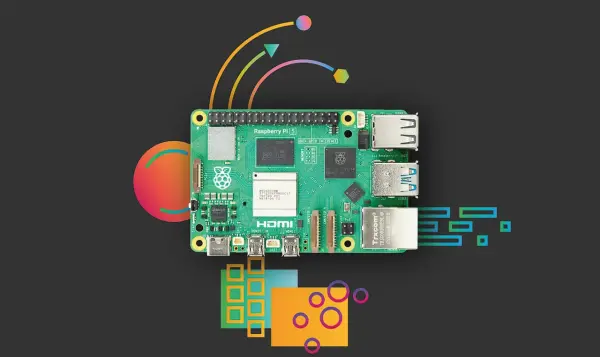The most recent Raspberry Pi mini PC released at the end of last year is stronger than its predecessors and can now perform tasks that were previously not possible. Raspberry Pi 5 is constructed with the RP1 I/O controller, a package that includes silicon created internally by Raspberry Pi. It also possesses sufficient power to operate large language models on the device itself, enabling you to adopt the AI revolution by installing AI on a Raspberry Pi 5. You are likely interested in learning more about the possibilities with AI once it’s been installed on your mini PC. Let’s explore the capabilities of the Raspberry Pi 5 with a focus on language models suitable for this device in the field of AI.
The performance of the Raspberry Pi 5 has improved, but it may struggle to handle the complexity of running OpenAI’s GPT-4. Nonetheless, do not lose heart. Smaller AI models, such as Mistral 7B, are accessible for individuals interested in AI experimentation on this potent pocket-sized mini PC.
For more accessible choices, think about open-source models such as Orca and Microsoft’s Phi-2. While not as powerful as GPT-4, these options still provide useful AI functionalities. They are particularly handy for developers who need access to a vast amount of information without depending on an internet connection.
How to run AI on a Raspberry Pi 5
For enhancing the AI functions of your Raspberry Pi 5, you could consider checking out the Coral USB Accelerator, which includes an Edge TPU coprocessor for only $60. By simply plugging it into a USB port, fast machine-learning inferencing can be done on various systems. These accelerators are specifically created for edge computing and can greatly improve AI functions. However, it’s important to note that these TPUs have restrictions as well, especially when it comes to bigger language models.
Configuring your Raspberry Pi 5 for artificial intelligence requires a couple of crucial steps. You must install the required software, set up the environment, and modify the model to be compatible with the ARM architecture. Ollama and similar tools can streamline this process, improving the efficiency of running language models on ARM-based devices such as the Raspberry Pi 5.
Security and Privacy
One of the major perks of running AI models on a local device is the privacy it provides. By processing data on your Raspberry Pi 5, you keep sensitive information secure and avoid the risks that come with sending data over the internet. This approach is essential when dealing with personal or confidential data.
For more demanding tasks, you can connect multiple Raspberry Pi devices in a cluster to share the computational load. This collaborative setup allows you to use more complex models by leveraging the collective power of several units. Local language models are particularly useful in environments with limited or no internet access. They can hold a vast amount of global knowledge, enabling you to use AI-driven applications even when you’re offline.
The Raspberry Pi 5 presents an intriguing platform for running smaller AI language models, offering a sweet spot between cost-effectiveness and capability. While it might not be the perfect match for top-of-the-line models like GPT-4, the Raspberry Pi 5—whether used on its own, with Coral TPUs, or as part of a cluster—provides a compelling opportunity for deploying AI at the edge. As technology advances, the prospect of running powerful AI models on widely accessible devices is becoming increasingly tangible.


